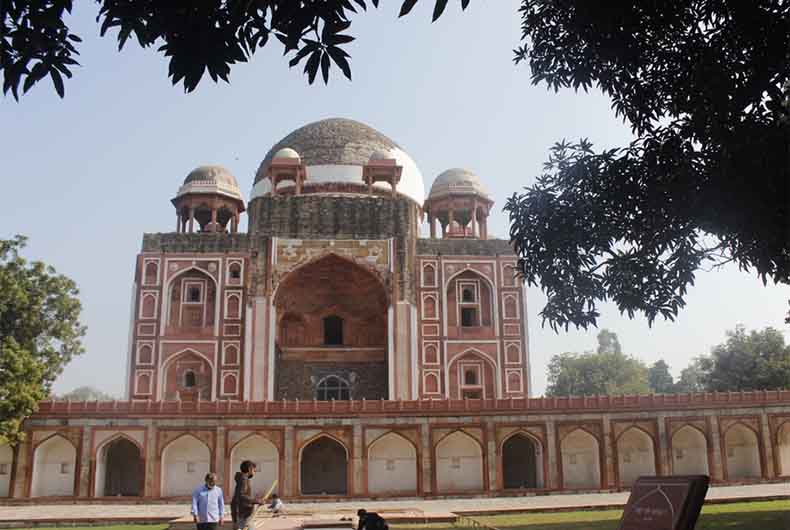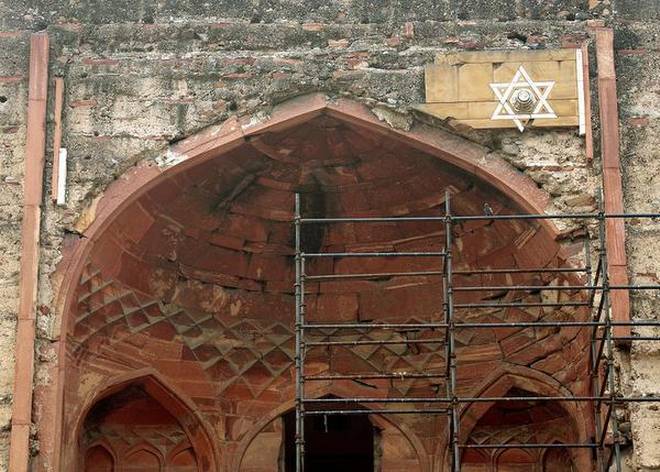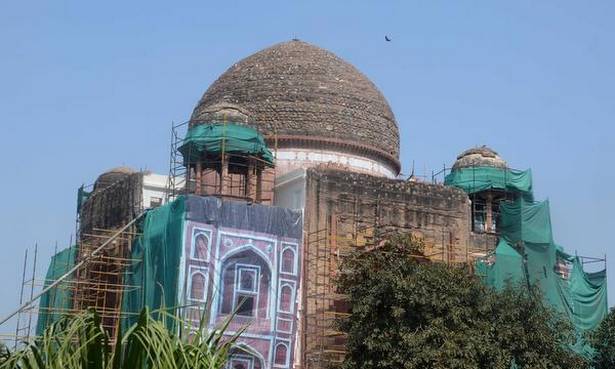NEW DELHI :
The tomb stands within an ensemble of 16th century medieval monuments in the Nizamuddin area of the national capital

New Delhi:
The tomb of Abdur Rahim Khan-I-Khana (1556-1627), popularly known as ‘Rahim — one of Akbars navratnas and a military leader — will open for visitors from December 17 here after completion of restoration work by Aga Khan Trust for Culture (AKTC) and InterGlobe Foundation.
The tomb stands within an ensemble of 16th century medieval monuments in the Nizamuddin area of the national capital.
The conservation project started in 2014, and included a cultural revival of Rahim’s legacy and poetry.
The Union Minister of State for Tourism and Culture Prahlad Singh Patel is scheduled to preside over the completion ceremony of Rahim’s Tomb on December 17, Rahim’s birth anniversary.
An expression of Mughal architecture, Rahim’s tomb informed the design for the Taj Mahal. Clad in red sandstone and marble, the interiors of the mausoleum are decorated with ornamental incised plasterwork, and decorative motifs such as the six-sided star and lotus medallions.
It stands at the edge of the buffer zone of the Humayun’s Tomb World Heritage Site, within an area of high archaeological significance.
Archeological Survey of India (ASI) is the custodian of the monument of note.
According to the organisations involved in the conservation effort, the physical revival of the tomb included repairs to the major damaged structures on the interior and exterior of the mausoleum dalans, canopies (chattris), dome, facade and landscape, along with the wall and ceiling surfaces.
The landscape around Rahim’s tomb has been restored to original slopes and height. The conservation of the dome has been completed with a symbolic addition of marble cladding.
“Conservation at Rahim’s tomb has been possible with a public-private partnership. Not only has a significant monument been conserved for posterity but dignity has been restored to the resting place of the cultural icon, Rahim. Conservation in the Indian context can benefit from thousands of years of building craft traditions and recourse to an interdisciplinary scientific approach. 175,000 craft days of work has helped restore this grandeur,” Ratish Nanda, CEO, Aga Khan Trust for Culture said.
The cultural revival efforts also witnessed compilation of Rahim’s literary works and archival research on his life and works by scholars, culminating in an English publication titled ‘Celebrating Rahim’.
A three-day music festival was also held in 2017 to disseminate Rahim’s literary works that saw a confluence of musical renditions, scholarly discussions on the multifaceted personality of Rahim and an informative exhibition.
The tomb was originally built by Rahim for his wife, making it the first ever Mughal tomb to be built for a woman, with the more celebrated Taj having been built later. As with other tombs in Nizamuddin, Rahim was buried here due the close proximity to the shrine of Hazrat Nizamuddin Auliya, as it was considered auspicious to be buried near a saint, said AKTC.
source: http://www.ummid.com / Ummid.com / Home> India / by IANS / December 16th, 2020










